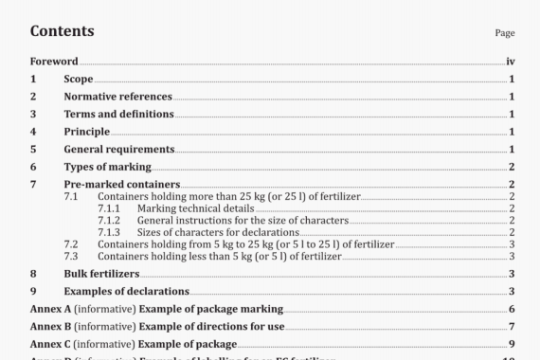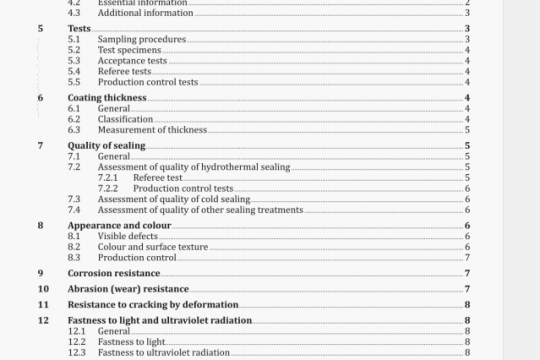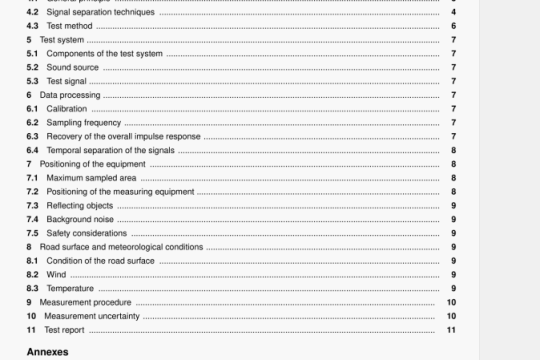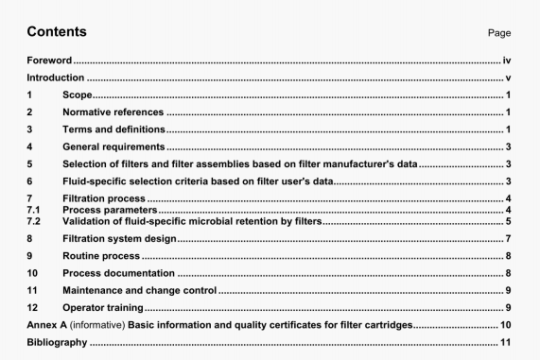ISO 15324:2000 pdf download
ISO 15324:2000 pdf download.Corrosion of metals and alloys –
Evaluation of stress corrosion cracking by the drop evaporation test.
8 Procedure
8.1 The specimen is attached to the gripping devices.
8.2 The specimen is resistance heated until a steady temperature of 300 °C is attained. The current required to maintain this temperature is noted.
NOTE The method described in annex B can be used to define the current required to achieve the desired temperature. However, it is recommended that the surface temperature be measured in each test using a small contact thermometer or thermocouple calibrated as described in annex B.
8.3 The solution is dripped on to the specimen at a rate of 10 drops/mm ± 10 %.
8.4 The load is then applied. The load to be applied shall be a fraction of the load corresponding to the 0,2 % proof stress at a temperature of 100 °C. A binary search procedure may be employed to determine the threshold stress as described in ISO 7539-1, although judicious selection of the stress for the first test should be used based on the anticipated resistance of the alloy.
NOTE Because of the dependence of yield stress on temperature, application of the load prior to dripping of the solution would not be appropriate as a general rule because it may result in exceeding the yield stress of the specimen.
8.5 The specimen fracture detection system is activated.
8.6 The applied current is increased by 25 %. This gives rise to a situation in which the specimen just dries out between each drop.
NOTE The application of the final current prior to wetting will cause the temperature to increase to an unacceptable level in terms of material property change, but such a current increase is necessary to establish test conditions severe enough to cause fracture in a reasonable timescale.
8.7 The temperature of the specimen shall be measured in the dry region at least once during the test, see annex B.
8.8 The test is continued until the specimen fractures, up to a maximum of 500 h. The time to fracture is recorded. NOTE By agreement, the maximum exposure time can be increased and the threshold stress redefined accordingly. Nevertheless, the value corresponding to 500 h of testing should be quoted.
8.9 The fractured specimen shall be examined to confirm that the failure was due to stress corrosion cracking, e.g. by fractographic or metallographic methods.
8.10 The test is repeated at other fractions of the yield strength until the minimum stress to cause fracture in 500 h is determined. The value shall be that fraction of the yield strength at which fracture did occur, but which was just above the stress at which no fracture occurred in 500 h.
9 Test report
The test report shall include the following information:
a) full description of the test material from which the specimens were taken, including UNS number, composition, heat treatment, type of product, and the mechanical properties;
b) method of manufacture of the specimens, details of the surface preparation and surface roughness parameters;
c) the solution composition, pH, volume and temperature;
d) the temperature of the specimen, quoting maximum, minimum and mean values and quoting the method of measurement;
e) the applied stresses as a fraction of the yield stress at 100 °C together with the value of the yield stress at 100 °C;
A pump can be used to deliver the solution directly to the glass tube (see 5.3) provided it maintains constancy of rate of supply. When using peristaltic pumps, variation of the flow rate at discrete intervals has been observed when the roller of the pump “lifts” off the silicon rubber tubing. This can cause a periodic temperature excursion.
Suitable control of drop rate can be obtained by direct gravity feed by passing the solution through a length (about 250 cm) of 0,5 mm internal diameter polytetrafluoroethylene capillary tubing connected between the reservoir and the glass tube, which is typically about 5 cm in length. The drop rate is adjusted by raising or lowering the reservoir or solution level. This may be necessary in maintaining constancy of drop rate as the solution level decreases with time.




